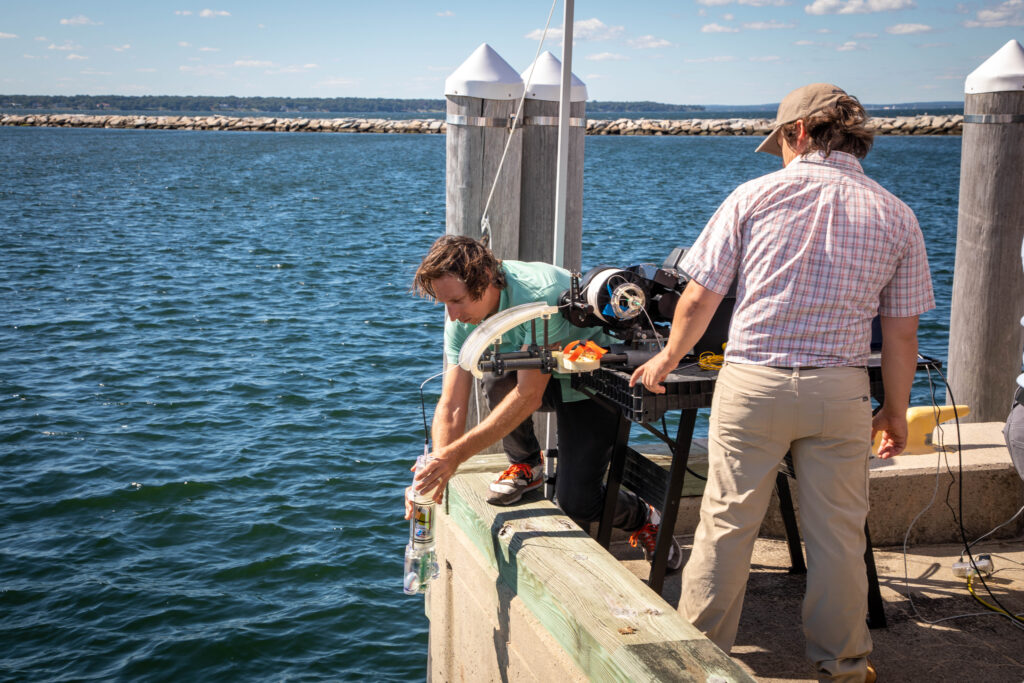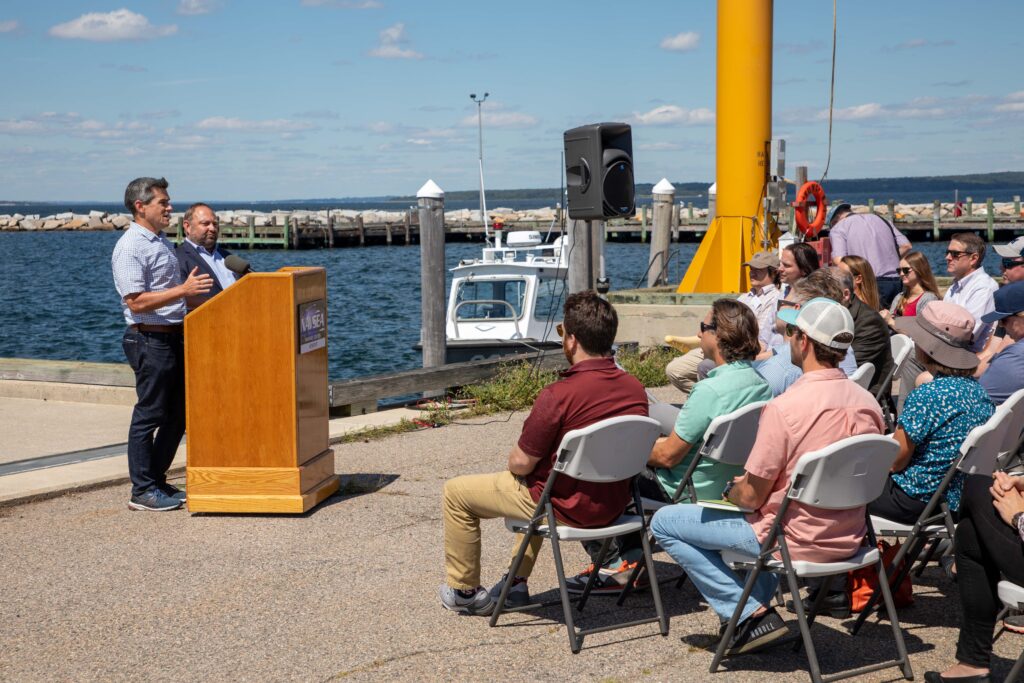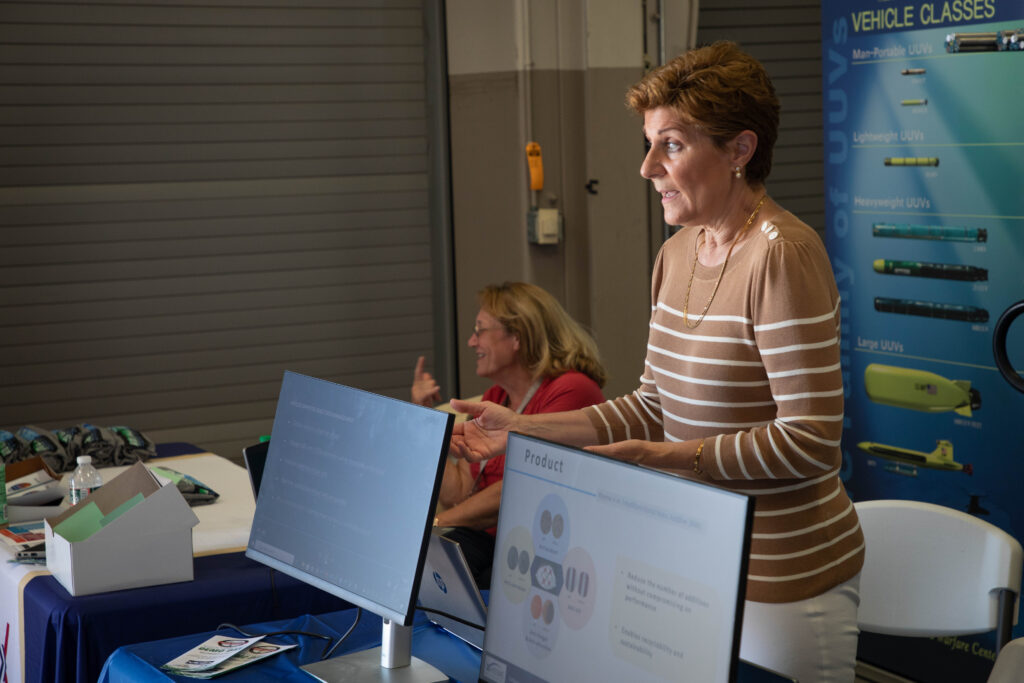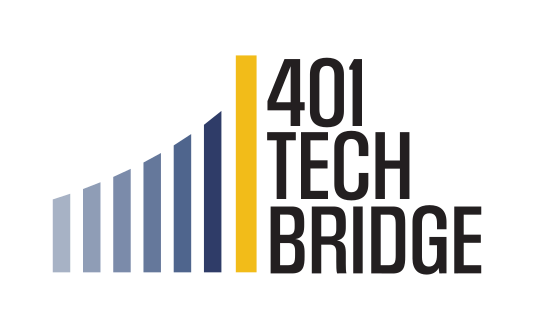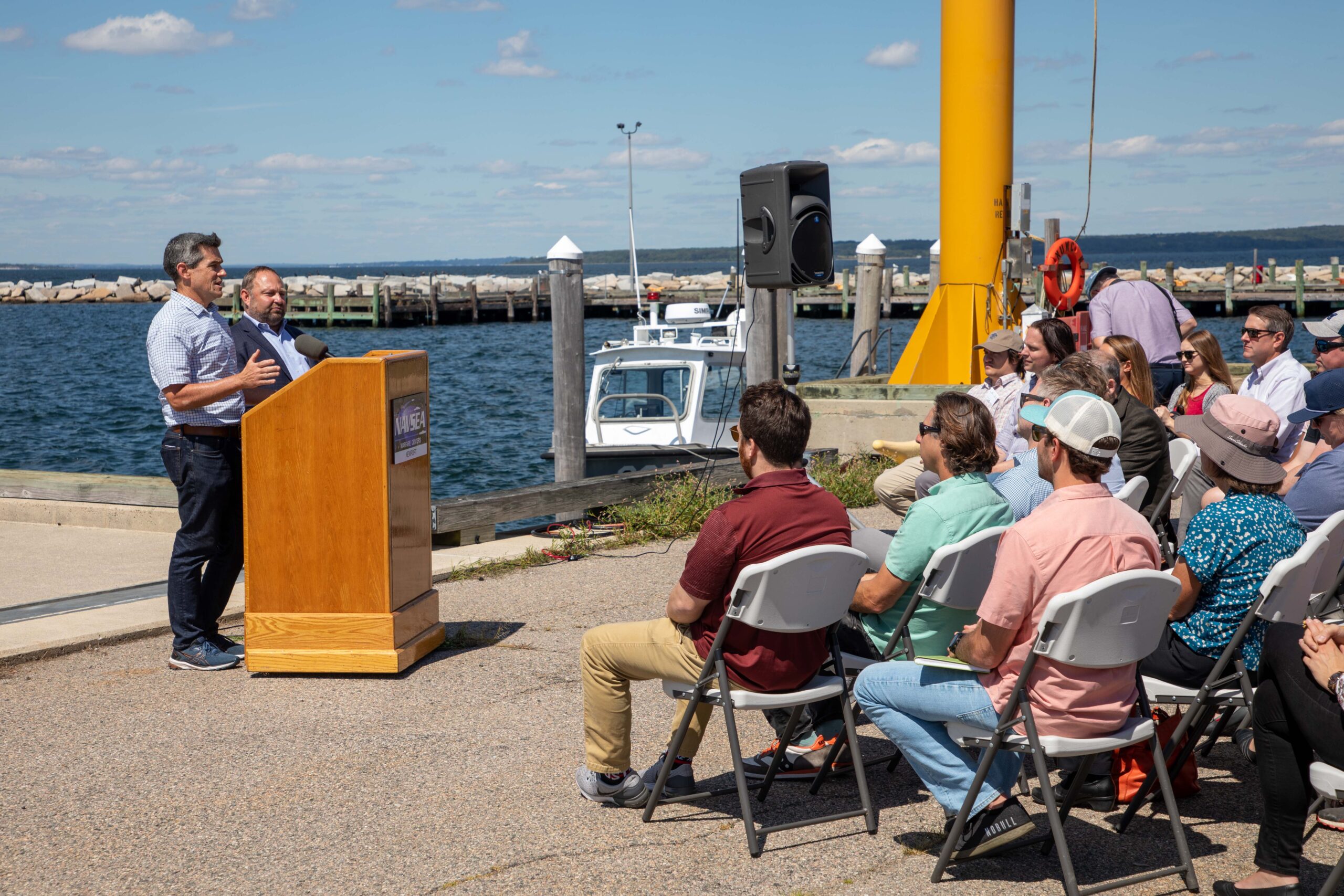
04 Oct New Undersea Technology on Display During Northeast Tech Bridge’s Demo Day
NEWPORT, R.I. – Naval Undersea Warfare Center (NUWC) Division Newport’s Northeast Tech Bridge hosted its first Demo Day in an effort to introduce new undersea technology from local start-up companies to a Navy audience.
The event, which featured seven companies, technology demonstrations and information sessions, was held Sept. 1 at the Narragansett Bay Test Facility. Division Newport’s Technical Director Ron Vien welcomed the participants.
“We’re looking for small business to come up with new ideas and we learn more about industry at these events,” Vien said. “We want to connect NUWC Division Newport engineers and scientists to industry partners to find dual-use solutions to Navy challenges.”
Several years ago, the Office of Naval Research (ONR) established a series of technology, business, and workforce programs to create an effective agility network across the naval research and development establishment and to promote partnerships with government, academia, and industrial partners. The Tech Bridges are ONR-sponsored entities located across the world, that bring together innovative organizations to accelerate results and solutions for the Navy — one way they do that is by increasing local access to innovation ecosystems.
The Northeast Tech Bridge is the government side of the Tech Bridge with focus areas such as undersea vehicles and undersea sensors. The goal of the Northeast Tech Bridge is to link government and industry and academia in an effort to help move ideas, projects and technologies through the innovation pipeline. The Northeast Tech Bridge works with the 401 Tech Bridge, a division of the University of Rhode Island (URI) Research Foundation, as a partner to achieve this goal.
Dr. Steven Bordonaro, director of the Northeast Tech Bridge, organized Demo Day to bring in several local start-up companies to demonstrate their technology on a Navy range in front of an audience of Division Newport engineers and scientists.
“There are barriers to entry when it comes to working with Navy and there’s a lot going on in the commercial world for us to tie into,” Bordonaro said. “We want to continue to reduce those barriers and continue to make it easier for companies to work with the Navy. The Blue Tech Accelerator Program can help companies as they’re starting out — it also helps them make connections to industry partners.”
“Dual-use applications are really important for us,” Christian Cowan, who was representing both the 401 Tech Bridge and the URI Research Foundation, said. “The 401 Tech Bridge can help with people, places and programming. There are incredibly exciting blue economy initiations in Rhode Island and NUWC Division Newport is a critical partner with both its assets and its people. It all benefits the state and the nation.”
The Demo Day held on waterfront at Rapid Engineering Experimentation Facility [REEF] is an example of how 401 Tech Bridge can bring industry-based non-traditional companies to partner with NUWC Division Newport and accelerate the technology to benefit the Navy as well as benefit private commercialization of those technologies, Cowan said.
Industry participants
A team from Boston Engineering Corp., based in Waltham, Massachusetts, demonstrated two vertical profilers — one in a tube on the deck and one out in the bay. Both of those profilers deliver vertical water column profiles carrying standard or user-specified payloads in large customizable payload volumes, collecting data and then transmitting them in a number of ways. For Demo Day, the team used satellite communications.
“Our hope for Demo Day is to expose ourselves and the technology to NUWC’s team and understand more about the incredible capabilities that NUWC has to offer,” David Shane of Boston Engineering Corp. said. “We’re already engaged with NUWC and want to be more involved collaboratively solving Navy problem sets.”
Darya Blout from Deep Blue Composites, located in Bristol, Rhode Island, shared her company’s deep sea pressure housing line meant to replace titanium pressure housings currently used in unmanned undersea vehicles (UUVs). Deep Blue Composites products reduce weight by using a fully composite option that is cost effective, making them more accessible to UUV manufacturers.
“I am hoping to bring more awareness to composites and their use in Navy and DOD settings,” Blout said. “I think that they are really underutilized, especially in the underwater vehicle space, as they’re only recently being adopted by the Navy and other defense sectors.”
The Jaia Robotics team, also located in Bristol, put two of their JaiaBot micro-autonomous undersea vehicles (AUVs) in the water to complete dive simulations. The JaiaBots can collect sound velocity profiles (SVPs), bathymetry, and water depth measurements while being able to travel at great speeds on the surface.
The company is hoping to reach out to future collaborators, show what their staff and robots are capable of and then have some time on the water as well, said Jaia Robotics engineer Jessie Paskoski.
Juice Robotics, based in Middletown, Rhode Island, demonstrated its fiberoptic reel system, or FOReel system, that was created in partnership with Nautilus Defense and URI. The system features a light, fiberoptic fishing line, a commercial mechanical reel, and a camera and light system that allows users to see live footage of the bottom of Narragansett Bay.
Juice Robotics was started by Matt Jewell who later partnered with Christine deSilva after meeting at URI during a film shoot for “Shark Week.” Their goal was to create a vehicle that would travel at high speeds and “get people’s attention.”
“We realized the future of deep sea research and deep sea exploration and really accessing oceanographic data is with these smaller, modular, lighter and more affordable components,” deSilva said. “So what we’re doing at Juice is really making that passion come together.”
Dr. Kevin Rosa started Current Lab, an ocean current forecasting company based in Newport that works mostly with the sail racing industry to help them find the fastest route across the race course.
“We can provide forecasts of what the currents will be doing and what the sound speed will be doing when you’re planning your mission,” Rosa said. “We do this with highly detailed computer models similar to a weather model but instead of forecasting the wind and the rain we’re forecasting the currents and temperature underwater. I’m hoping to talk to people at NUWC Division Newport and the Navy world to understand what their needs are and what we could potentially provide for them in the future.”
Will Magruder, senior director of Partnerships at Mass Challenge, a global, nonprofit zero-equity accelerator program, helped assemble the Demo Day participants along with Linda Larson and the 401 Tech Bridge team.
“Mass Challenge has always been an industry agnostic accelerator program for the purposes of today’s event we’ve partnered with the 401 Tech Bridge and Northeast Tech Bridge to highlight high potential companies in the blue tech space,” Magruder said. “We’re excited to show some of the best companies in the Mass challenge programs as part of today’s event in Newport.”
Dillon Fournier, range manager from Division Newport’s Undersea Warfare Ranges, Engineering and Analysis Department, led the logistics and range support for this event.
“The Narragansett Bay Test Facility has all the support needed to run events like demo day and ANTX, and can also support smaller test events with companies needing to test their in-water technologies.” Fournier said “Through work for private parties and collaborative research and development agreements, we are here to help mature technologies.”
Mary Sylvia, head of Division Newport’s Technology Partnerships Office, answered participants’ questions on the variety of different agreements available to work with Division Newport.
“It’s the first of many events we’re going to be having over the next several months and maybe years,” Sylvia said. “It’s a wonderful opportunity for small businesses to get inside our gates and show us the technology they’ve got.”
The Tech Bridge will continue to support efforts throughout New England in the Blue Tech area as well as continue to offer tech scouting to Division Newport engineers and scientists interested in learning more about industry’s technology. The Tech Bridge will also continue to partner with the URI Research Foundation.
“We want to continue events like these. They’re at the scale where I think the conversations are very natural and having these fairly small-scale events multiple times a year is an effective way to work with companies, especially the small ones,” Bordonaro said. “Some of the bigger companies can navigate a larger event where a small company can get lost. If companies are interested there’s another cohort going on with Mass Challenge and the 401 Tech Bridge in the Blue Tech area so that’s something they can look into.”
Ultimately the first Demo Day achieved its goal of connecting industry to the Division Newport workforce.
“The technologies that were showcased were right on,” Bordonaro said. “I was really happy to see the conversations that were happening. I think there are going to be some outcomes long-term, whether it be projects or collaborative research. We planted some seeds that I think are going to grow for a long time.”
You can learn more about the start-up companies that attended Demo Day at:
- Jaia Robotics, https://www.jaia.tech/
- Current Lab, https://www.current-lab.com/
- Juice Robotics, http://juicerobotics.com/
- Boston Engineering Corp., https://www.boston-engineering.com/
- XHeme Nanotechnology, https://xhemeinc.com/
- AnyLog, https://anylog.co/
- Deep Blue Composites, https://www.deepbluecomposites.com
